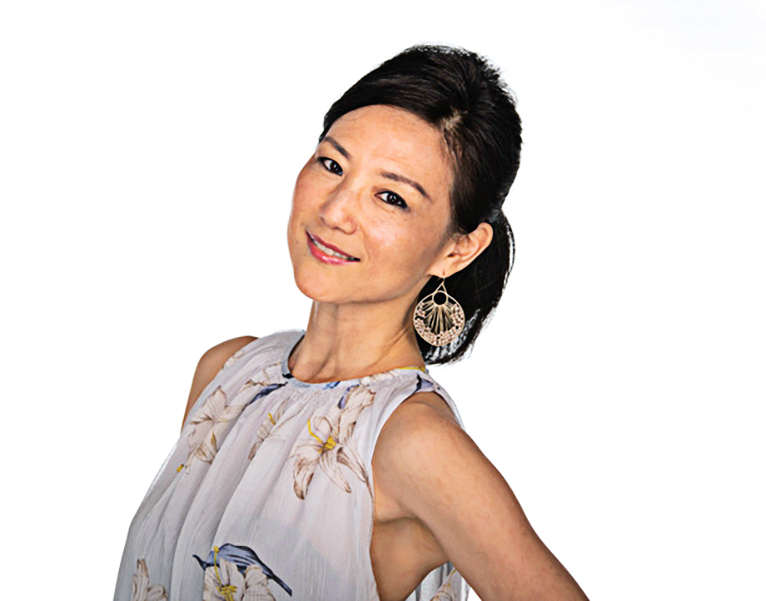
Even in a video interview, Yan Chen’s energy and enthusiasm are unmistakable. “I like to Zoom because I get a little more personal,” explained the American Ballet Theatre Studio Company rehearsal director, who is also and principal teacher for the ABT Jacqueline Kennedy Onassis School’s Pre-Professional Division. “So next time I see you, I know who you are!” Just another reason to be envious of Chen’s JKO students.
After dancing as a soloist with ABT, guesting around the world, spending almost three decades teaching pre-professionals, and working as company and school teacher for the Orlando Ballet for over a decade, Chen began her dual full-time role at JKO last September. There, she says, she strives to “create the kind of class environment where everyone feels invited to join in on exploring the movement.”
What do you like most about teaching at JKO?
My history with ABT goes back almost 30 years. The company itself has its own rich history, and the JKO School is an essential part of the organization: to nurture the young generation. I’m thrilled and humbled to be a part of giving back to this organization. The students are very willing, eager and hungry. It’s wonderful to witness the energy and the dynamic in the studios.
What is the biggest challenge you’ve experienced working with today’s generation? How do you work through these challenges?
Everybody can get information so fast in this world of new technology, and of course the human body is so much more advanced than it was 30 years ago. The flexibility! The turning ability! So young dancers think that’s how everything is. But ballet training is actually about building a foundation of good placement, so they have career longevity. That doesn’t happen overnight. The challenge is trying to teach them to understand that process, so they don’t get bored with the repetition.
You have to constantly remind them that ballet is something you continue to work on. As a teacher, you cannot get tired and you cannot give up. You might have to find a different way of explaining the same principle or a new exercise to keep them interested. You have to be creative, but the fundamental theory is the same: You’re teaching them persistence.
What’s the best and worst advice you’ve ever been given as a dance educator?
I can’t really pinpoint the best advice. You just have to absorb and process all advice, that’s how I look at it.
The thing I don’t like to hear—and would never tell a student—is “Give up.” It’s our job to keep them going, to encourage them. Maybe ballet isn’t right for someone, but telling a kid to give up is always the wrong message.

Who is your biggest role model in the dance education field?
My parents! They’re not educators or dancers, but they taught me personal character. As a dancer or as a dance educator, you need character, discipline and strength to get going and move ahead.
In China, I was not accepted into ballet school because of my father’s background. My father then fought hard for a year to get me into the school based on my abilities, regardless of my family background. He told me, “Dignity means that if you deserve to be there, you need to be there.”
Once I got into the school, my mother worked a second job so I could get the extra nutrition I needed. Their selfless sacrifices inspire me when I’m teaching. You want to give it all—everything you have—to your students.
What message do you have for today’s dance educators who are continually working to inspire and empower the next generation?
We have a responsibility to the young generation to be an example and a role model. It’s easy to say, “Work hard! Don’t be lazy!” It’s much harder to make your actions reflect what you preach.
What is one “thing” that makes you and your teaching style unique?
I demonstrate all of the content in my class. Dance is a very visual thing, so if you can show them, it will help the dancer to understand more in-depth. Especially with my English, sometimes it’s hard to explain a lot of the biomechanics. I find that when I demonstrate, it helps the students understand what I’m trying to explain more quickly.
What’s your favorite thing about teaching dancers who are on the cusp of a professional career?
It’s exciting because they’re old enough to really understand what I’m trying to teach them. Their minds are much sharper and more mature than 11- to 13-year-olds’. They’re able and willing to explore sophisticated or abstract corrections, like “Engage your thighs” and “Use your core.” And because they’re a little bit older and, therefore, stronger, their muscles are actually able to move where they want them to go!




